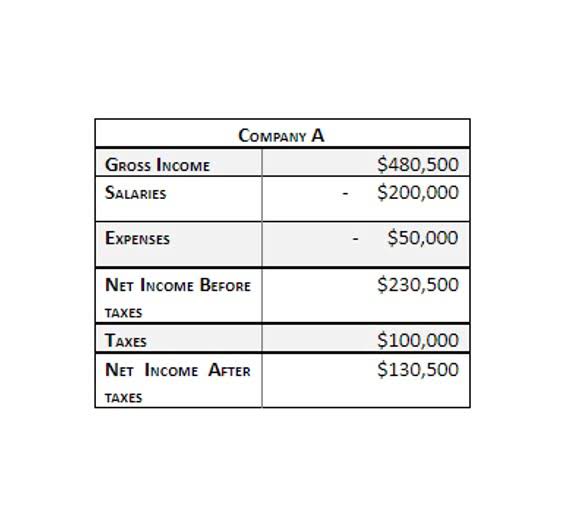
FIFO also promotes regular inventory turnover by selling older stock first, reducing obsolescence risk. This method is easy to manage and interpret, simplifying inventory valuation. The remaining inventory will then be 50 units at $10 each (first in), for a total of $500.
What Is Retail Shrinkage? Causes, Types and 8 Strategies to Reduce It

Each method has distinct advantages and implications for financial statements and tax liabilities. By evaluating the Accounts Receivable Outsourcing FIFO vs LIFO accounting methods and their effects on cost flow, businesses can make informed decisions that align with their operational needs and financial objectives. The LIFO reserve is the difference between the inventory reported under LIFO and what it would have been using FIFO.
FIFO vs LIFO Inventory Valuation
Inconsistent use of different methods can how to calculate fifo and lifo distort financial statements, making it difficult to track performance over time and potentially misleading investors or stakeholders. The LIFO (last in, first out) retail inventory method assumes that the most recently acquired inventory is sold or used first, meaning the newest stock is recorded as the cost of goods sold. FIFO (First In, First Out) assumes the oldest inventory is sold first, and LIFO (Last In, First Out) assumes the newest inventory is sold first.
- Regular inventory turnover tends to keep inventory value closer to market value and is a more realistic representation of how most companies move their products.
- Under FIFO, when 60 units are sold, the COGS remains $600 (60 units x $10 per unit).
- In inflationary times, FIFO will report higher profits, whereas LIFO will typically result in lower taxable income.
- In times of inflation, this results in lower COGS, leading to higher gross profit and net income.
- First, the cost of inventory under the FIFO method is calculated, aligning with the physical flow of goods.
LIFO vs. FIFO: Inventory Valuation

The FIFO and LIFO calculators streamline this process by applying your chosen cost flow assumption to determine how much it costs to produce the goods you sell. The calculators assist in tracking which items leave the warehouse first, aligning with how you’ve added products to your inventory. Embracing these tools empowers you to maintain an accurate balance sheet and manage the cost of goods sold more cash flow effectively.


That also means that your business accounts for selling the most expensive items first – a move that increases your COGS, decreases net profits, and leads to lower income taxes. In other words, the costs to acquire merchandise or materials are charged against revenues in the order in which they are incurred. Notice how the cost of goods sold could increase if the last prices of the items the company bought also increase.
- You should consult your own professional advisors for advice directly relating to your business or before taking action in relation to any of the content provided.
- LIFO is more commonly used by companies dealing with nonperishable goods to reduce tax burdens during inflation.
- This provides a better match between the current cost of inventory and current revenue, often seen as a more realistic measure of profit generated from ongoing operations during inflation.
- On the other side, during inflation, the LIFO method increases the cost of goods sold and reduces taxable income.
- Thus, goods purchased earlier were normally bought at a lower cost than goods purchased later.
⚠️ What Happens If There’s No Inventory?
Since only 100 items cost them $50.00, the remaining 5 will have to use the higher $55.00 cost number in order to achieve an accurate total. LIFO, while useful for managing tax liabilities, doesn’t always reflect true maintenance costs. If a company is stocking critical spare parts, using LIFO can result in an outdated inventory valuation, creating discrepancies between financial records and actual asset conditions. Big-box retailers, supermarkets, and wholesalers that keep large stocks of non-perishable goods sometimes utilize LIFO. This method helps counter increasing supplier costs by expensing the latest purchases first, which in turn lowers reported profits and tax obligations.
FIFO stands for first in, first out – it’s an inventory accounting method that accounts for selling the oldest inventory first. You don’t actually need to sell the oldest item first – but you report the inventory for accounting purposes as if you sold the oldest item first. Here’s how the first in first out accounting principle affects your inventory valuation and cash flow. Under first-in, first-out method, the ending balance of inventory represents the most recent costs incurred to purchase merchandise or materials. Please note how increasing/decreasing inventory prices through time can affect the inventory value.

Aligns with the natural flow of your inventory
Now to the report, the main objective of this tutorial so that we can calculate the value of units as and when we want for any number of units in any order. The last units in were from January 26th, so we use those first, but we still need an additional 30. Again, we will update the remaining units before considering the sale. Since we are using LIFO, we must take the last units in, which would be the units from January 12th. Then we would take the remaining 15 units needed from beginning inventory.
FIFO vs LIFO: A Comprehensive Guide to Inventory Valuation Methods
Therefore, selecting the right inventory costing method is more than just compliance; it’s a strategic business decision. If the prices of inventory items fluctuate widely, the choice of accounting method can significantly affect the cost of goods sold and ending inventory values. In inflationary times, FIFO will report higher profits, whereas LIFO will typically result in lower taxable income.